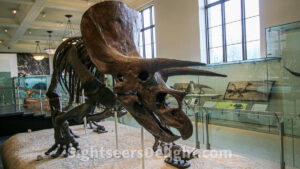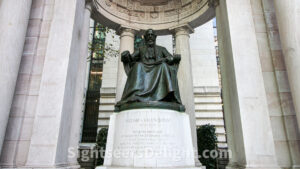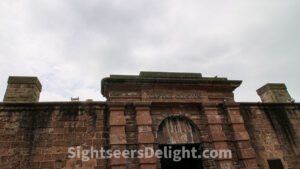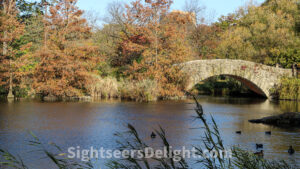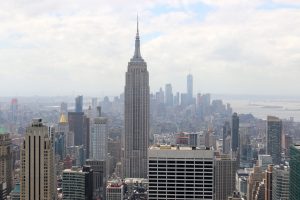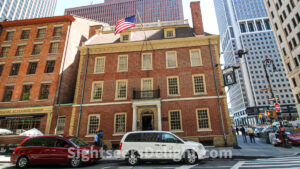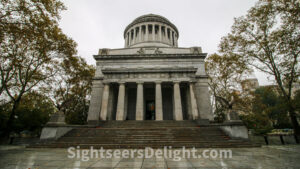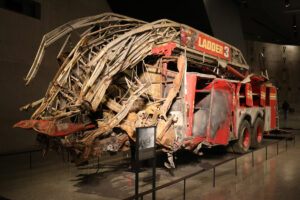Founded in 1869, the American Museum of Natural History in New York City is one of the world’s preeminent cultural institutions and features 45 permanent exhibition halls. The museum is home to the Theodore Roosevelt Memorial, New York State’s official memorial to its 33rd governor and the nation’s 26th president, and a tribute to Roosevelt’s enduring legacy of conservation. The museum’s five active research divisions and three cross-disciplinary centers support approximately 200 scientists, whose work draws on a world-class permanent collection of more than 34 million specimens and artifacts, as well as specialized collections for frozen tissue and genomic and astrophysical data, and one of the largest natural history libraries in the world.
10024
Battery Park is a 25-acre public park located at the southern tip of Manhattan Island. The area has been known as The Battery since the 17th century. The area was so-named because of artillery batteries that were positioned there in the city’s early years to protect the settlement.
The 9.6-acre Bryant Park is unique in that it is part of the New York City Department of Parks and Recreation but privately managed. Located adjacent to the New York City Public Library, the history of the park dates to 1686, when Thomas Dongan, New York’s colonial governor, designated the area a public space. George Washington’s troops crossed the area while retreating from the Battle of Long Island in 1776, and in 1823, the site was designated a potter’s field (bodies were moved to Wards Island in 1840). The first park at this site, Reservoir Square, opened in 1847. The park was renamed in honor of New York Evening Post editor and abolitionist William Cullen Bryant in 1884.
10018
Castle Clinton, also known as Fort Clinton and previously Castle Garden, is a circular sandstone fort located in what is today Battery Park. The structure sits roughly two blocks west of where Fort Amsterdam was built in 1626. At the time, New York City was still named New Amsterdam. Construction on Castle Clinton started in 1808 and finished in 1811; it was built on a small artificial island just offshore. The structure was America’s first immigration station and predates Ellis Island. More than 8 million immigrants passed through Castle Clinton while entering the United States between 1855 and 1890.
10004
Central Park might be the most famous urban park in the world. City officials established the park in 1857 on 778 acres of city-owned land. The park was expanded to its current size of 843 acres in 1873. More than 40 million people visit the park every year. The U.S. Department of the Interior designated the park a National Historic Landmark in 1962.
The Empire State Building is arguably the most iconic representation of Gotham City. The 102-story-tall skyscraper was built in 1930-31 and opened on May 1, 1931. It was the tallest man-made structure in the world until 1954 and today is the second-tallest skyscraper in New York and the fifth-tallest completed in the country. The view from the observation deck is awesome, to say the least.
The historic Fraunces Tavern played a prominent role before, during and after the American Revolution. The edifice was a headquarters for George Washington, a venue for peace negotiations with the British and housed federal offices during the early days of the republic. Downstairs is a tavern, and a museum is located upstairs. Exhibits include a lock of hair and a tooth from George Washington.
10004
The General Grant National Memorial is the final resting place of President Ulysses S. Grant and his wife, Julia. The memorial is the largest mausoleum in North America and honors the man who credited with ending the bloodiest conflict in American history as Commanding General of the Union Army. After his Presidency, Grant settled in New York City and died of throat cancer on July 23, 1885. He was laid to rest in New York City on Aug. 8, 1885. More than a million people attended the parade and dedication ceremony of Grant’s Tomb on April 27, 1897.
10027
There are some places that are truly unparalleled, whether it’s the atmosphere, the history or the general experience. While New York City as a whole falls into that category, Grand Central Terminal does as well. The New York Central built the grand terminal, which opened in 1913. An estimated 21.6 million people visit the terminal annually, making it the sixth most visited tourist attraction in the world, according to Travel + Leisure magazine. Even if travel plans in New York don’t call for an entry into or departure from Grand Central, a visit to the Terminal is well worth the sidetrack, no matter how far out of the way it might be.
10017
Sept. 11, 2001, was one of the darkest days in the city’s history. The city persevered and rebuilt. The National September 11 Memorial & Museum commemorates that fateful day. The 9/11 Memorial & Museum, located in the basement and footprint of the former Twin Towers, is a poignant reminder of the day, with exhibits bringing to life the heartbreaking, heartwarming and heroic stories that emerged from the devastation and destruction.
10007

